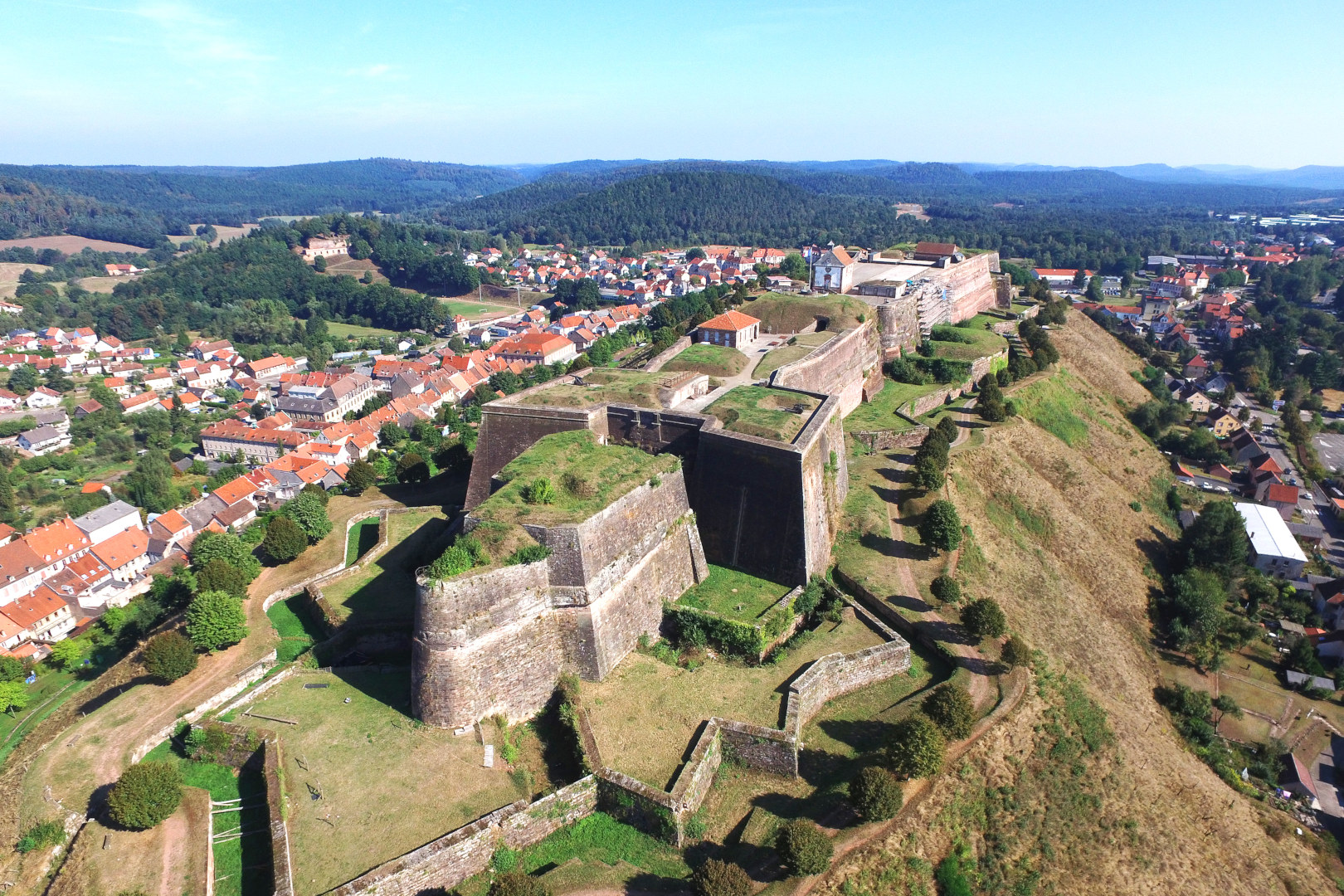Pays de Bitche: Castles, crystal and countryside in the borderlands
Text: Lisa Gerard-Sharp | Photos © Pays De Bitche

The Pays de Bitche are beguiling borderlands in the Northern Vosges, sandwiched between Alsace and Germany. Set in Lorraine, these lands have long been a cultural crossroads and a pawn in the politics of the great powers. Framed by forested mountain peaks, with ruined castles, military forts and wild wooded landscapes, this region is made for history buffs and hikers in search of ‘the real France’.
Pinning down this mysterious landscape is part of the magic. Le Pays de Bitche lies in the Moselle ‘département’ of the merged mega-region dubbed Le Grand Est. These borderlands are bound by Alsace to the south and to the German Rhineland-Palatinate and Saarland to the north.
“We’re recognised in Unesco’s World Network of Biosphere reserves,” explains Delphine Descourvières, who represents tourism in the region, “and we can offer not just special wildlife but walks through amazing scenery, with fortress-topped forests and castles that have helped shaped European history.”

Built on a rocky spur, the medieval Château de Waldeck was dismantled during the Thirty Years War and never rebuilt. It makes for a romantic view from many hiking trails. Photo: ©Lezbroz
Unesco-listed scenery
Hugging the Franco-German border, the Unesco-listed Northern Vosges is celebrated for its dense forests, sandstone outcrops and myriad streams and lakes. It might feel gloriously remote yet it’s also a stepping-stone to Alsace and Germany, with the renowned vineyards of Moselle and Alsace on its doorstep, along with sophisticated Strasbourg and Metz. The Pays de Bitche is also made for exploring on foot, with over 400 miles of marked border trails.
The cross-border Northern Vosges National Park is filled with dense forests, heathlands, peatlands, rocky outcrops and sandstone cliffs. The nature reserve preserves the forestry belt, the habitat of peregrine falcons and lynxes, along with a sustainable, eco-friendly, rural way of life beyond the big urban centres. The landscape, running from wetlands to uplands, also provides a home to grey herons, kingfishers, tawny owls and storks, along with highland cattle, and even a bison ranch, where North American bison roam.
One steep hike takes in four strongholds, including the Château du Falkenstein, the picturesque medieval ruins of a pink sandstone fortress. You can even borrow a top-quality hiking kit free of charge from the tourist office. For keen cyclists, the 28-mile-loop known as Mills without Borders is a cycling path that reaches the German frontier. While once war-torn paths have become peace trails, the border castles are a reminder of the region’s earlier history on the military frontline.

Hike into the UNESCO World Heritage landscape of Le Pays de Bitche, framed by forested peaks, carpeted by heathlands, and dotted with wetlands and lakes suitable for swimming.
Castle country
Castle country peaks in Bitche, one of the biggest strongholds in the Vosges, and one of the last Moselle towns liberated in 1945. Set on a rocky spur, the Citadelle de Bitche is a red sandstone fort looming over the town. Remodelled by renowned French military engineer Vauban on Louis XIV’s orders, but only finished in 1754, it was built to buttress the power of the French kings. Cross the great drawbridge to vertiginous views of the Northern Vosges and you’ll see why these borderlands were irresistible to invaders.
The most recent battleground was the Maginot Line, with the French forts built as a bulwark against German might in the 1930s. Exploring fearsome Fort Simserhof or the underground barracks of Fort Casso gives a fascinating insight into military life on the frontline.
Fort Simserhof, meanwhile, faces the German border and, as a major fortification on the Maginot Line, was thought invincible. A visit to the Fort these days includes a journey through the munitions area of the museum-site on armoured trucks so you can relive the 1940 Blietzkrieg through the haunting memories of the valiant French troops garrisoned here.

Meisenthal: Meisenthal Glass Museum is a showcase for Art Nouveau glassware, while the Glass Hall is used for events. Photo:© G. Rebmeiste
All that glitters
The area also has a long-standing tradition of glass-making with both sparkling glass and crystal crafted here for centuries – a nod to the vibrant, sophisticated side of life in the Vosges. These forests have long held all the essential elements for glassmaking, from plentiful water and wood to silica and potassium. The Meisenthal Glass Museum originally began as a glassworks where the pioneering, world-renowned master-designer Emile Gallé started out, making Meisenthal the cradle of Art Nouveau glassware. Today you can watch glassblowers at work before exploring a superb collection of vintage glass, including Gallé creations, etched with plant patterns.
In 1781, the Cristallerie de Saint-Louis introduced lead, the crucial ingredient in crystal, and became the first company in continental Europe to perfect the crystal-making process. This illustrious crystal-maker was boosted by French royal patronage but is now royally run by Hermès. Admire flawless crystal, prized for its brilliant, multi-faceted effect, before being tempted to toast the region in Moselle wine.
As Descourvières says: “Most trails swiftly turn into cultural explorations of castles or crafts centres, a reminder that glassmaking and crystal-working are still cultivated here. Ours might seem a low-key landscape,but it’s also a glittering one.”
www.tourisme-paysdebitche.fr www.tourism-lorraine.com www.mosl.fr Twitter: @tourismepaysdebitche and @regiongrandest
Subscribe to Our Newsletter
Receive our monthly newsletter by email





